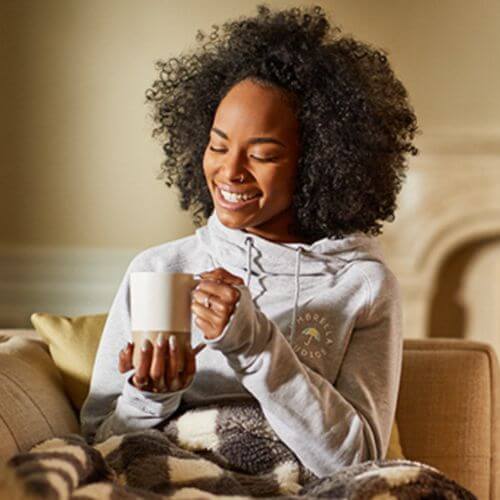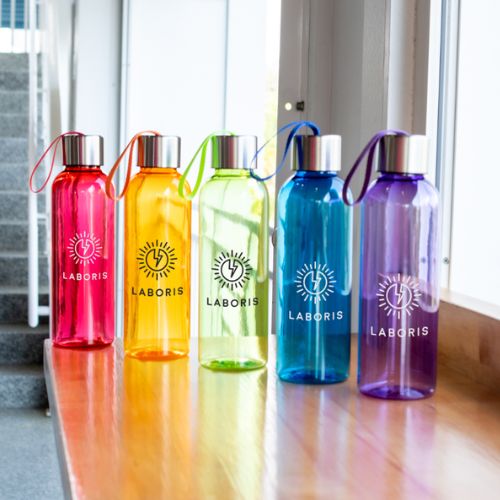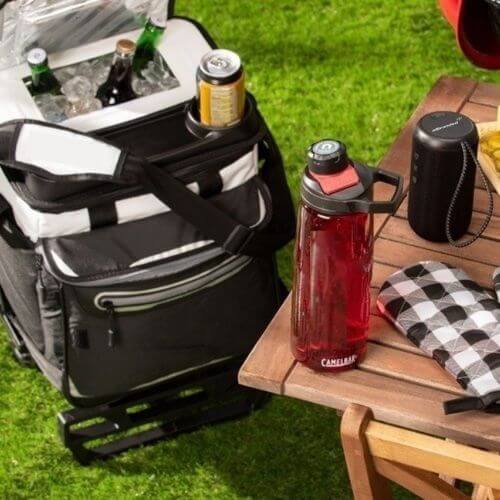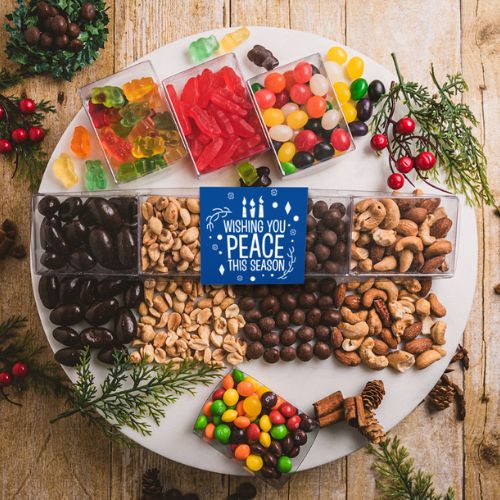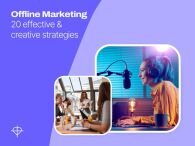Understanding the Psychology of Branding for Businesses
There is more to branding than simply choosing a design, color and name you like. The psychology of branding can really play a role with your overall impact. Learn about brand psychology and see what are the 10 most important takeaways for marketers in this post.

The brain is one of the most complex things on this planet. Which means we are constantly learning more about it as we go along. Psychology, or the study of the human mind and its functions, is more than just for scientists in lab coats. Everything around us has to do with psychology. Yes, even the branding you use for your promotional products. Read more to understand the psychology of branding in this post, what it is and how you can use it to your advantage with long term marketing strategies.
How does branding relate to psychology?
Branding is not a one time action. You do not brand something and then never think about it again. When coming up with “branding,” it is a verb, meaning it is always in action. The same should apply to your attitude to overall branding. It is something you can continue to do and evolve.
Essentially, branding is how your company connects with your target audience. Not only will you communicate your products and services, but also your overall company values. This helps to bring your company from a faceless corporation to something more personal and intimate that customers can connect with on a deeper level.
With these connections being made, potential customers can create options and ideas about your company. Which in turn, lets them decide on whether or not they want to associate with your company in the future. This is the psychological connection and it is all shaped by psychology. This is what is important to keep in mind when starting a new business and creating a brand but also when you want to expand on your current brand too.
The science behind brand psychology
Brand psychology isn’t just theories marketers and entrepreneurs like to throw around for fun. It is actually rooted in science. This means there is data to prove these theories and it can be replicated. For our purposes, brand psychology is focused on how businesses can use psychological principles to connect with their audience. Some of the specifics include:
- Identity
- Colors and color psychology
- Pattern recognition
- Sense of belonging
- 5 brand personalities
- Multiple ways to build a brand
Identity
How we see ourselves as individuals can help us relate to others and therefore, create our own realities. That means, if you consider yourself to be trustworthy and reliable, then it makes sense you would want to associate yourself with people and brands who have that same value.
For marketers looking for ways to connect with their target audience, it is important to have your audience create an identity for your brand. This new identity should also be relatable, otherwise people won’t interact with it. While the specifics can depend on the goals you are trying to accomplish, the main idea would be to create an identity that is trustworthy, rugged, sincere and authoritative. These are traits that most people can connect with best.
Colors & Color Psychology
Choosing brand colors for your company has a lot more nuance to it than simply choosing a random color. While we have taken a deep dive into color psychology, to sum it up, different colors have different meanings. They can invoke various emotional connections and responses when looking at them. Some of these responses can be cultural influences while other responses can be more natural or innate.
For example, green in marketing is often associated with plants, nature, cleanliness and sustainability. While a color like red in marketing evokes passion, fire, drive and sometimes anger. Colors can convey something as simple as price range or corporate values without using a word, but simply because of the psychology behind colors.
Pattern Recognition
Much like color, human minds are quick to recognize patterns in images and the world. When we think about how this relates to business branding, a consistent brand is crucial for an effective branding strategy.
This goes beyond just the color and images though as you will need to make sure your brand has a consistent tone of voice, logo, imagery, color and color palette, service and more with every interaction you have with them. All of your customer touch points should be consistent, therefore, giving your target audience a consistent overall impression and brand. This builds trust and the personal connection we mentioned before. Without this repetition and branding, people will not be able to connect with your company.
➥ Our Tip: A crucial part of understanding branding is to create a set of brand guidelines that will be the building blocks of your company. This will include your unique tone of voice, your messaging, your design and more. Your brand guidelines should be followed by everyone in the company, from the CEO to your social media team and everyone in between.
Sense of Belonging
Humans are social beings. That means we need to connect with others and feel like we are a part of something greater. Much like how people connect with their favorite bands, singers, actors or celebrities, you will want to create a sense of community or fandom with your target audience. Once you create this, it will be hard for your competitors to win over your fans.
When it comes to understanding branding psychology, you need to make sure you clearly convey who you are as a brand. You want to showcase your values as a company and what you stand for. This should include how you interact with your customers, but also your company culture. A couple examples include:
Disney
Nostalgia has become a large focal point in pop culture of today. One company that does that well is Disney. They create a connection between parents and children since parents have grown up watching these movies and want to pass down these traditions. Another example is creating live adaptations of their most popular animated classics, such as The Lion King, The Little Mermaid and Beauty and the Beast.
Starbucks
Starbucks and their coffee has become a staple in the coffee industry, but also in pop culture as well. They have created a sense of belonging by their aesthetic that many people aspire to on social media. Great marketing campaigns they run are their yearly holiday cups. People feel as if they are a part of something bigger when they can purchase and participate in this highly anticipated ritual each year.
Five brand personalities and examples
What are brand personalities you might ask? The term brand personality refers to human characteristics that can be attributed to a brand. These traits, when consistently present, allow for customer engagement and enjoyment. Traits give the brand relatability that might otherwise not exist. Popular personalities often include the following:
✨ Excitement ✨
This is often seen as brand’s showing themselves as playful, modern, youthful, trendy, happy and carefree.
Brand examples include:
- Red Bull for its high-energy campaigns and youthful slogan.
- Nintendo for its reputation as an innovator in video games along with its modern and trendy designs.
⛺ Ruggedness ⛺
Ruggedness usually relates to toughness, the outdoors, and a rough around the edges feel. It can also be conveyed as athletic and sporty, almost with a sense of grit to it.
Brand examples include:
- Harley Davidson for its iconic designs and its rebellious spirit in relation to the open road and classic American feel.
- REI for its outdoor products and expertise. This rugged image comes from their passion for all things outdoors.
⚜️ Sophistication ⚜️
Sophistication comes with a sense of luxury, class and aspirational status. It can also convey elegance, exclusiveness, and prestige. However, on the negative side, it can also sometimes come off as pretentious.
Brand examples include:
- Tiffany & Co. for its renewed, exquisite jewelry and designs. Plus its iconic blue boxes show wealth and status.
- Ritz-Carlton for its sense of class, prestige and high-status in terms of supreme service, luxury accommodations and ambiance.
✌ Sincerity ✌
These brands generally come off as more kind and thoughtful or even more as family-oriented. More traits can include sustainability or care for communities and workers.
Brand examples include:
- Dove for its messages of real beauty and self-love or self-acceptance. This brand also frequently celebrates diversity.
- Airbnb for i’s authentic and genuine travel experiences from locals who live in the areas. The connections they foster also relate to the community aspect.
✅ Competence ✅
Brands that have this personality trait highlight their leadership qualities and their expertise. They can often be seen as successful, influential, and accomplished.
Brand examples include:
- Google for its competence in search engines, online advertising and it’s diverse range of internet related products and services
- Johnson & Johnson for its well-known and trusted pharmaceutical and healthcare endeavors. Plus its competence in developing new products.
By utilizing one or more of these personality traits, you are connecting with customers in a more meaningful way. Use these ideas, values, traits and personalities to incorporate into your overall brand guidelines.
Multiple ways to build a brand
These are some guidelines to help you get started. However, there are multiple ways to build a memorable brand up with the use of brand psychology. While it might make sense to take some elements from others, stay true to you. When you are being true to your brand, that is when people will most resonate with you. If you simply do what your competitors do, you won’t be making any waves in your industry. Consider deviating from them and carving your own path to success.
Optimize your company with the psychology of branding
Now that you have all the tools, you can start to optimize your overall branding and marketing strategies to make the most out of your niche audience. It might seem strange to focus on your niche market first, but since they will be the most loyal and most likely to convert, it makes sense to target them the most. This relationship will help foster a sense of community and loyalty, leading to deeper meaning.
Some things to keep in mind moving forward:
- Communicate clearly - You know what they say about assuming something! Don’t leave it up to interpretation. Be sure to convey clear communication with your target audience. If you are bold, sassy or simplistic, be sure to make that clear from the start. This doesn’t only apply to your logo. It can be for your tagline as well.
- Be clear and consistent - Moving forward, you want to make sure you have a clear and distinct brand and message. That doesn’t mean you can’t ever change it. When you grow and expand to reach even more markets, just keep this in mind. Be sure to allow gradual growth so as to not disrupt the current connection people have with your company.
- Use segmentation - While your audience probably all has something in common - you - you are able to break them down into even smaller sections through the use of segmentation. By doing so, you can create an even more targeted and personal experience for the audience.
Example: Starbucks fans generally come because they all like coffee. However, it would make sense for Starbucks to stay open late nights on college campuses since students are more likely to be awake during finals. Or they can offer dairy alternatives for those who like coffee, but who might be vegan or have dietary restrictions.
Conclusion
Hopefully, through all of this, you are able to take something away from how to best brand and target your audience in the right way. Through the use of brand psychology, you can target your audience in the right way to create deep and meaningful connections. Ultimately, this connection will lead to more sales, more brand awareness and brand loyalty.
While most of these ideas are theoretical, how they will be applicable might vary. So test out a few variations and learn from trial and error. As a marketer or entrepreneur, take these tips with you to start building your successful brand today! Or, if you already have one, use these tips to help with your promotional giveaways and other marketing materials you might need.

